CLAS242 Regal Period
1/18
There's no tags or description
Looks like no tags are added yet.
Name | Mastery | Learn | Test | Matching | Spaced |
|---|
No study sessions yet.
19 Terms
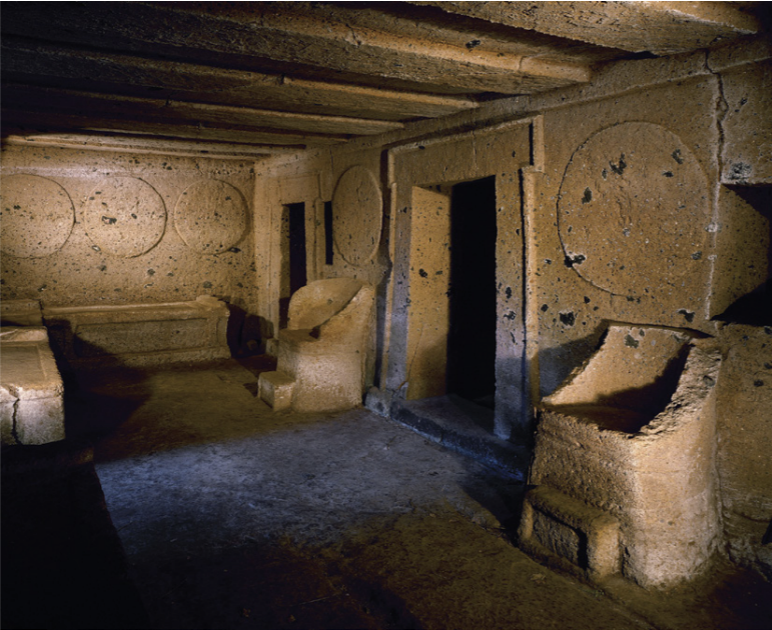
Idenitfy and Analyze
Tomb of the Shields and Chairs
Banditaccia necropolis, Cerveteri
Regal Period
753-509BCE
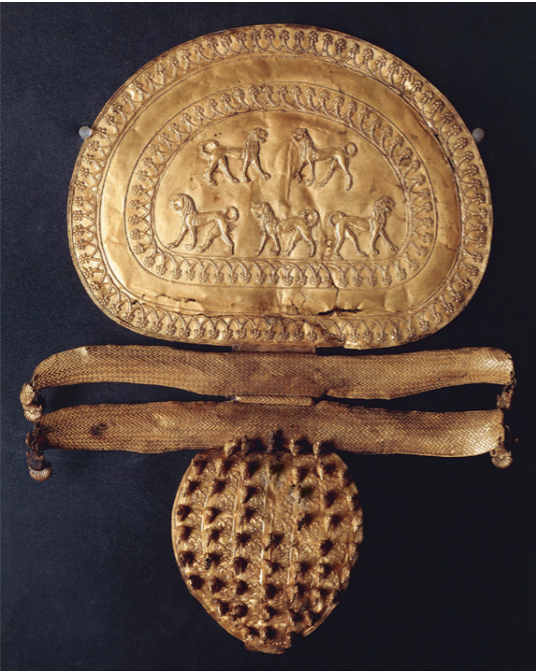
Idenitfy and Analyze
Golden Fibula
Regolini‐Galassi tomb
Regal Period
753-509BCE
made of solid gold
symbolizing high status
kind of clasp/safety pin
for hair/cloak but more likely hair since it’s pretty big
Fibula bones
in leg
zigzagging pattern on them
possibly representing two rivers that separate the overworld (upper lion panel) from the underworld (lower duck panel)
“Orientalizing”
styles imported from Near East
term no longer used
Hathor
engraved sideways on piece
Etruscan’s trade/sharing of ideas with Egyptians
Repoussé
indents/raised surface pushed out from back
seen in lions
Granulation
bits of metal melted used to create patterns/shapes
leaves pattern surrounding lions
Filigree
thin metal wires sautered onto the piece with metal gold
edges of bands
Corinthian styles coming from trade through the city
one East port and one West
things imported through there and across land onto another boat
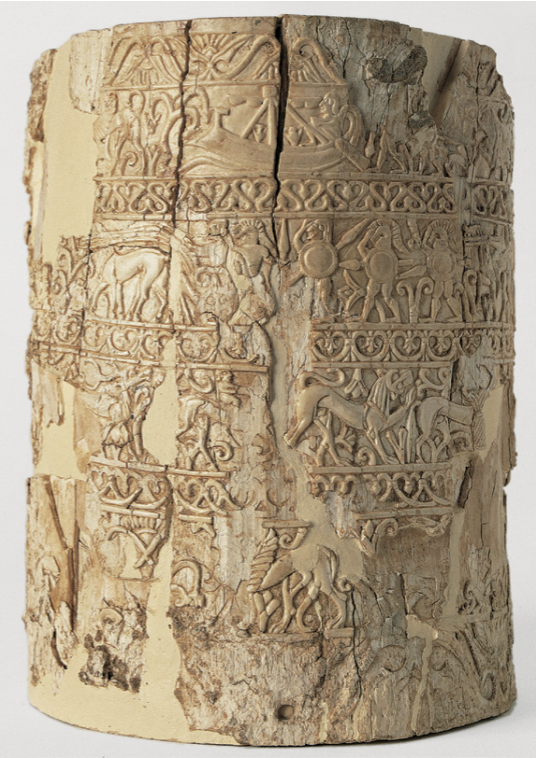
Idenitfy and Analyze
Ivory Pixus, Pania burial, Chiusi
Regal Period
753-509BCE
Northern Africa
DNA Analysis - Hippopotamus
majority of ivory at the time
Bands/Registers
dividing decorative piece into zones to aid in narrative composition
Seen a lot in Corinth
Burial context giving status symbol
Two registers filled with scenes of Homer’s Odyssey
escape from Polyphemus
escape from Scylla
introduction of Greek narrative into Etruscan art
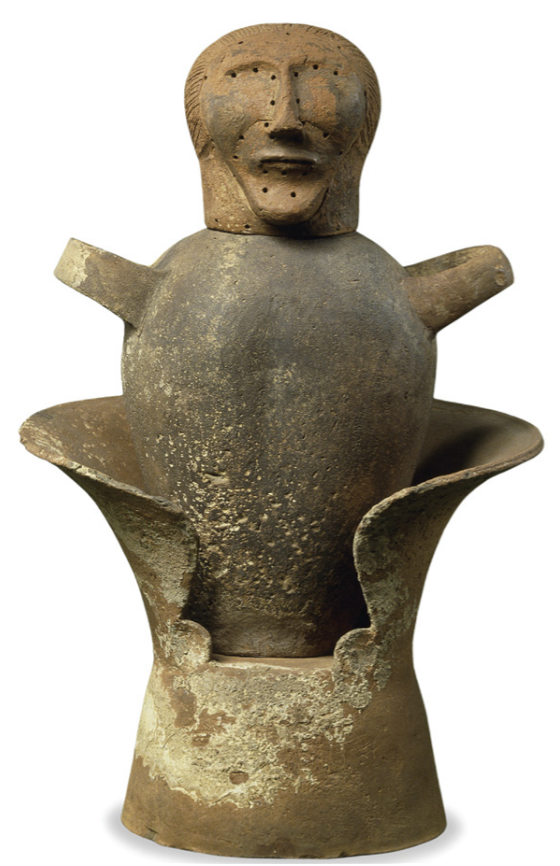
Idenitfy and Analyze
Terracotta “canopic” urn
Chiusi
Regal Period
753-509BCE
Not essentially canopic
just people trying to justify their own ideas of where the Etruscans came from
Urn is made to look human, ressembling person inside - made of 3 pieces:
Head
holes in face to place death mask when not in use
style of face is very Etruscan
Body
holds the ashes inside
handles on sides broken, but originally meant to be like arms with hands resting on hips
Chair
known Etruscan symbol passed down to Roman to show signify Elite male status
many different ideas associating a status to this person
could be sat receiving people into their home
could be from the Roman military
could be a throne

Idenitfy and Analyze
Couple sarcophagus from Cerveteri
Regal Period
753-509BCE
Common to eat/sleep in reclined chairs such as this
VERY taboo to show woman doing this, such as in this statue
since women are private
Etruscans known to show more of women doing these things
sports, eating, etc.
seemingly different status for women than in other cultures
slightly more equal to men
faces closer to a Greek style
almond eyes, pointed chins, goofy little smiles, kind of braided hair.
Intimacy
man’s right arm around woman’s back
hands possibly holding things associated with burials
jewelry, wine cup, perfume, garland, etc.
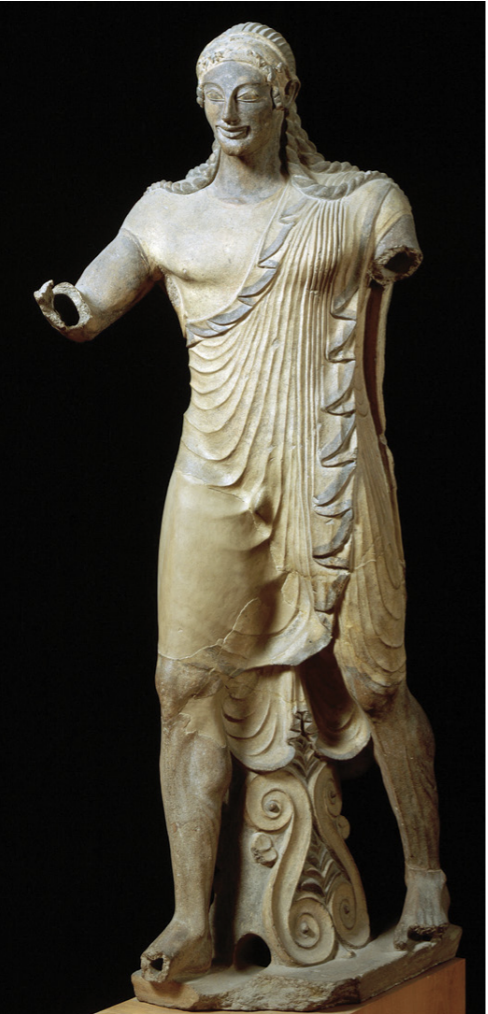
Idenitfy and Analyze
Apollo of Portonaccio Sanctuary
Veii
Regal Period
753-509 BCE
best example of mixture culture
Etruscan Apullu - Greek Apollo
not exactly the same worship strategies
same iconography/ideology
Acroterion
decorative sculpture on roof on the temple
meant to be seen from distance
Terracotta
would’ve been painted
Kouros
statue of young male in his prime
18-22 years old
gifts to deities
early versions often straight-backed with little to no movement
defined as being naked
as a hero = nudism
this statue is different from a kouros
clothed, though very thin fabric to still show everything off
very dynamic posing - in mid stride
due to Etruscan style and use of terracotta - easier to create dynamics than marble
Greek influences
kouros
face styles, hair, body
support column in middle has Ionic designs seen on columns in Ionia
very inspired by Eastern Greek styles

Idenitfy and Analyze
Minvera Tritonia
Lavinium, Latium
Regal Period
753-509BCE
very Etruscan and Greek iconography
Helmet + Armour + Shield
Snake
shows no point of intersection with Greek styles
very slender/up an down posture/columnar
unlike Greek
Medusa Cloak
medusa myth - head put onto cloak
Triton
half-man half-fish
association non existent in Greek mythology
very Etruscan localized
showing her association with the sea
Acroterion
originally painted
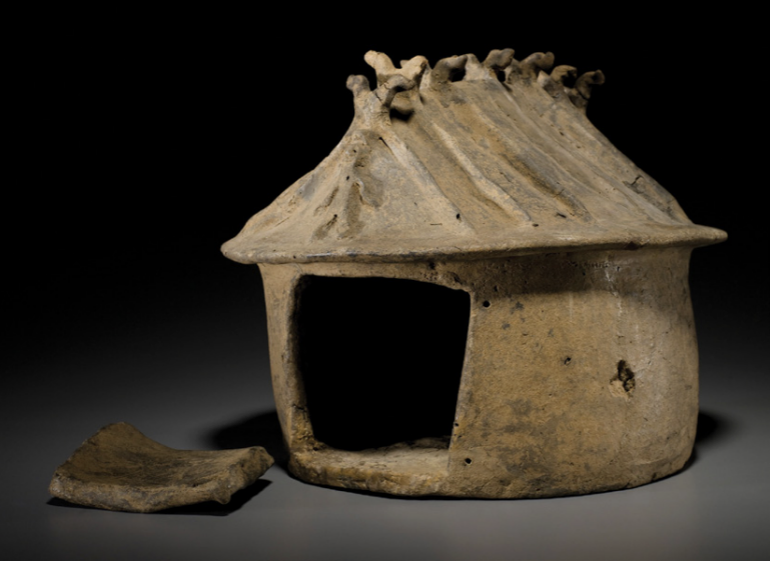
Idenitfy and Analyze
House urn
Forum Romanum
Regal Period
753-509BCE
found in Roman cemetery at the north end of the forum
kept cremation tradition from Etruscans
putting ancestors into houses seemed important
Replication of Roman house
ground impressions of real things only true evidence aside from these smaller versions
single room
wattle and daub roof
woven branches for support covered in mud
essentially reinforced mud
thatched to deter water away from mud walls of homes
Roman pit burials
sometimes placed in large terracotta jar with other grave goods before being buried
simple burials
shows difference between Etruscans and Romans

Idenitfy and Analyze
Temple of Fortuna acroterion of Hercules and Athena
Regal Period
753-509BCE
low slope of Capitoline Hill
Terracotta
Acroterions
Hercules
known from lion skin cloak with buckled belt
myth of him fighting the Nemean lion
style can be traced to Cyprus
Athena
helmet and spear
Greek features and body proportions
Together
mythology of Hercules’ ascension into Godhood
Athena brought him in
Apotheosis
Temple itself was Etrusco-Italic
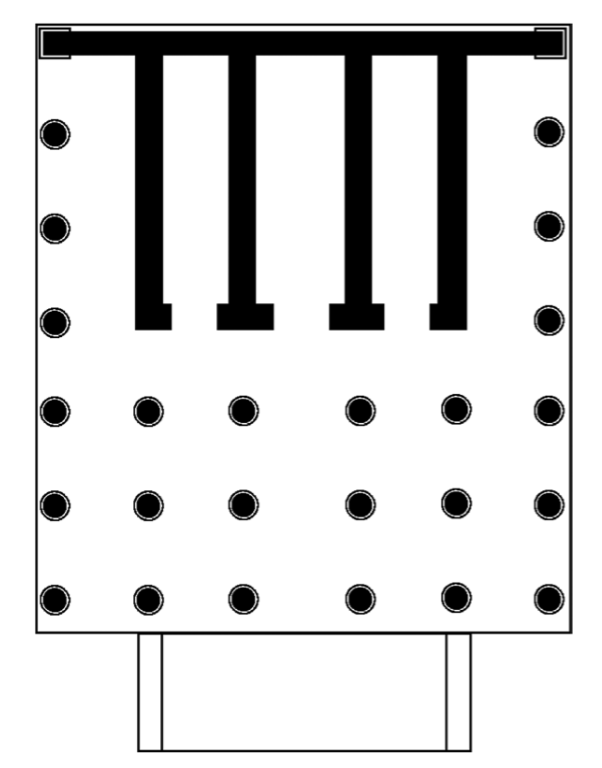
Idenitfy and Analyze
Temple of Jupiter Optimus Maximus plan/model
Regal Period
753-509BCE
Capitoline Hill
later becomes most important Roman structure throughout history
hosted senate meetings
triumphs parades through the city would end here
public sacrifices (done outside at front)
Capitolline Triad
Jupiter, Juno, Minerva
3 rooms inside (celli) for each one
temples considered to be the houses of the Gods
very rare in Greek architecture
Earliest kings made earliest version of the temple
consistently burnt down/destroyed and rebuilt
example of Roman/Italic temple
square rather than rectangular
no columns around back
basic form different from Greek
deep front porch
focused on one entrance
First temple to appear on Roman coinage
Emperor Petillius coin 43BCE
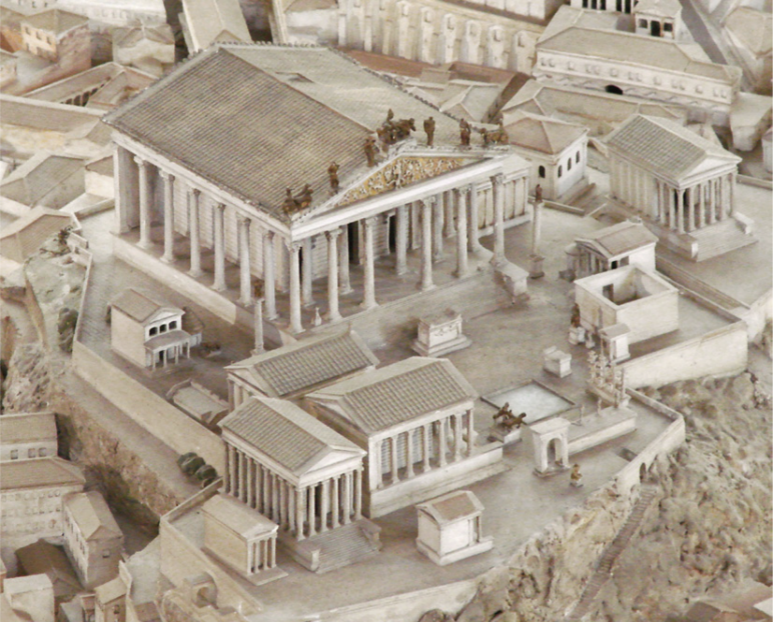
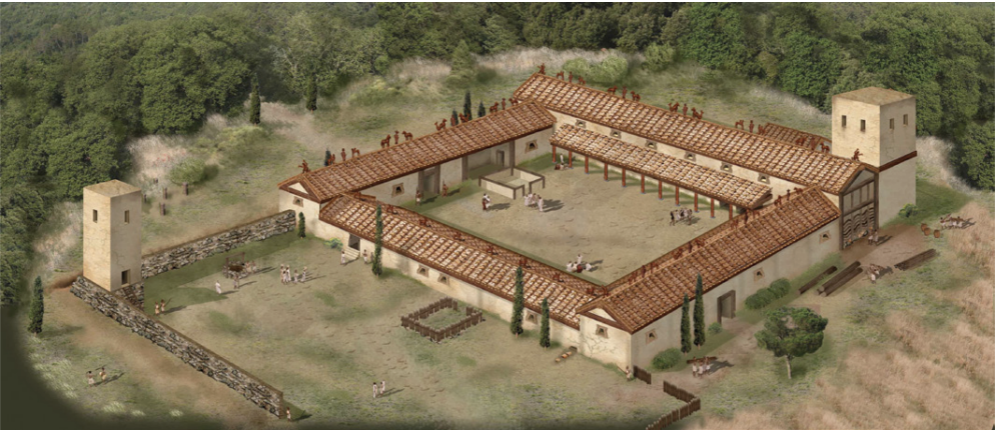
Idenitfy and Analyze
Murlo (Poggio Civitate) reconstruction illustration of Archaic phase buildings
Regal Period
753-509BCE
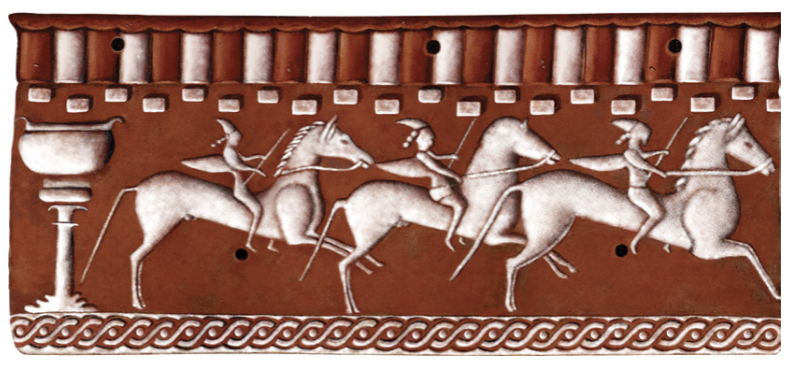
Idenitfy and Analyze
Murlo (Poggio Civitate) terracotta plaque of horse race
Regal Period
753-509BCE
Horse race
game? competiton?
Torch holder at left end
piece to end composition
turning point in the track
did truly exist
Horse dynamics
not true to life but rather to just get the impression of movement across
Hierarchy of Scale
representing status/importance
stylistic choice
if humans were to stand they’d be bigger than the horses
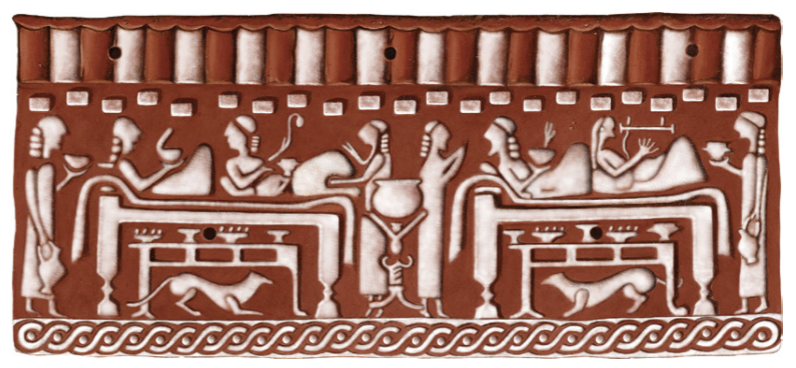
Idenitfy and Analyze
Murlo (Poggio Civitate) terracotta plaque of banquet scene
Regal Period
753-509BCE
Greek style banquet
Reclined dining
signifying elite status
another rare example of women dining alongside men in art
Distinction of Men vs. Women
men have red hairbands
difference in hairstyles between the two
hierarchy of scale
women are smaller
not an example of everyday Etruscan dining
cups and dining wares are ceremonial vessels from Greece and Near Eastern reliefs
possibly signifies a religious context of the piece?
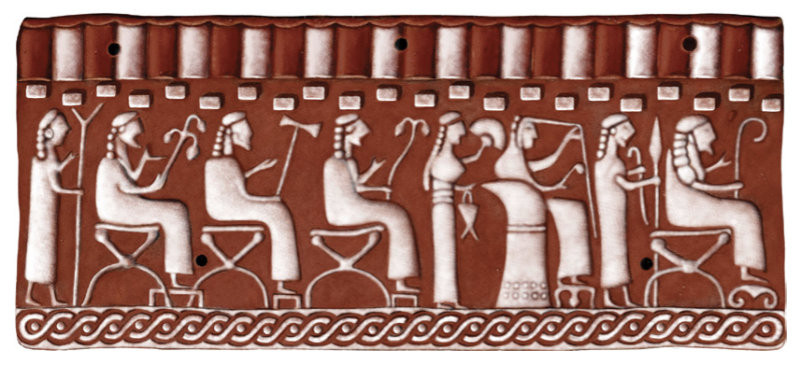
Idenitfy and Analyze
Murlo (Poggio Civitate) terracotta plaque of assembly scene
Regal Period
753-509BCE
context of scene hard to discern
Hieros gamos - “holy marriage”
Woman drawing veil over her face
very specifically marriage
fancier chair than the rest
may refer to marriage between god and goddess
Jupiter and Juno
Seated men
bigger than standing
showing importance
holding various different objects
Axe - Hephaestus in hieros gamos

Idenitfy and Analyze
Wall painting of Achilles and Troilus
Regal Period
753-509BCE
Etruscan tomb painting in Tomb of Bulls
painting of Achilles in tomb
Someone liked the story?
A hero buried in this tomb?
More so just a story representing death
Myth of Achilles and Troilus
there was prophecy that Troy would not fall if Troilus, prince of Troy, reached his 20th birthday
Achilles went to where Troilus was known to bring his horse to drink and killed Troilus
Demonstrates how Etruscans paid attention to Greek myths/were a part of that literary sphere
Body proportions very Greek
Horror Vacui
fear/horror of emptiness/blank spaces/vacuum
Etruscans filled everything in with art so there would be no blank spaces
using plants to help composition
Below panel
four trees - four seasons? representing passage of time
Garlands - not reality, but rather myth/fiction
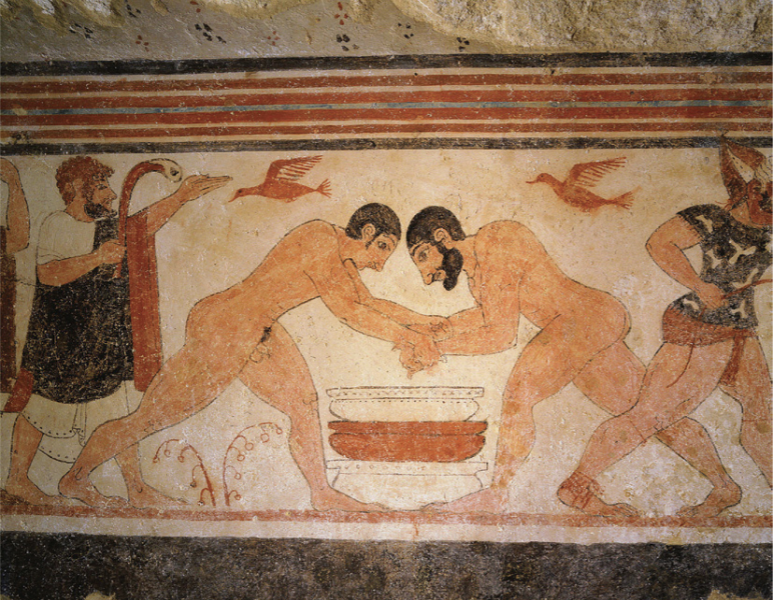
Idenitfy and Analyze
Wall painting of events from funeral games
Regal Period
753-509BCE
Funeral games
Etruscan thick thighs
More direct styles from Greece
beard/art style
Difference in facial hair showing age difference?
Attempt of torso profile rather than twisted nonsense
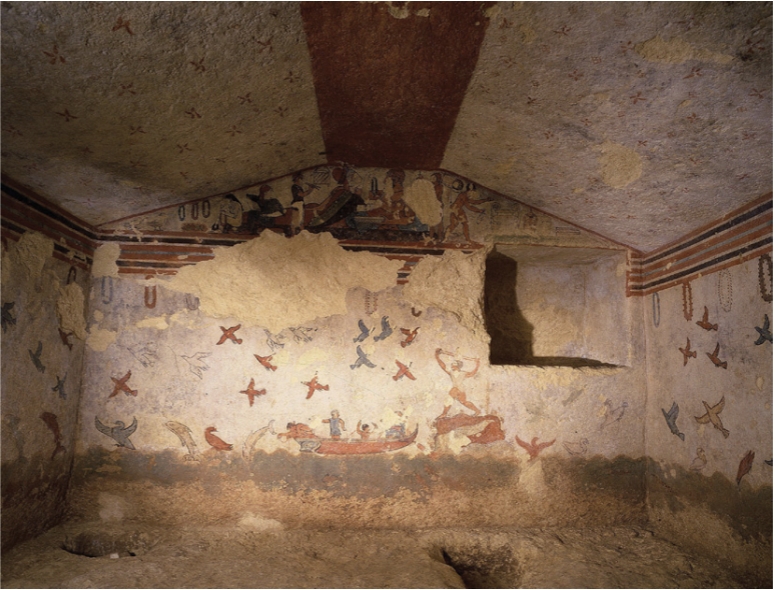
Idenitfy and Analyze
Elite dining and outdoor scenes
Regal Period
753-509BCE
Upper panel
Dining scene
fond of dining? funeral feast?
garlands showing symbolic nature of it
Lower Panel
hunting/fishing scene
boat fishers
slingshot at birds
most deadly weapon in antiquity
time for hunting
leisure time
don’t have to spend every second working, can take the time to do something “fun”
warcraft practice
garlands
not actual
possible vision of the afterlife?
“this is what i liked doing during life, this is what I will do all the time in the afterlife”
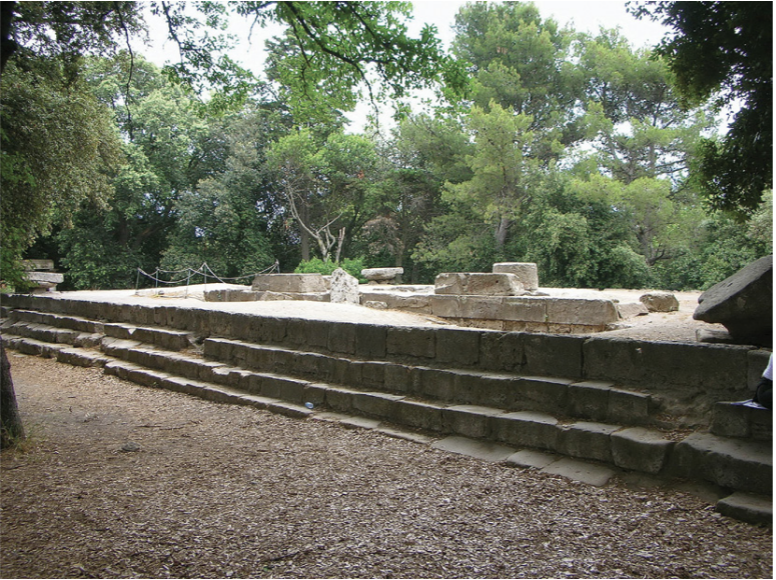
Idenitfy and Analyze
Remains of the Doric temple in the Triangular Forum
Regal Period
753-509BCE
Pompeii
first Roman building of a Greek style
very close to Greek colonies
possible reason to why it took on a Greek style
Greek signifers":
low three step platform
surrounding colonnade on all sides
Doric capitals
possibly dedicated to Minerva and Hercules
two cella, one for each
t